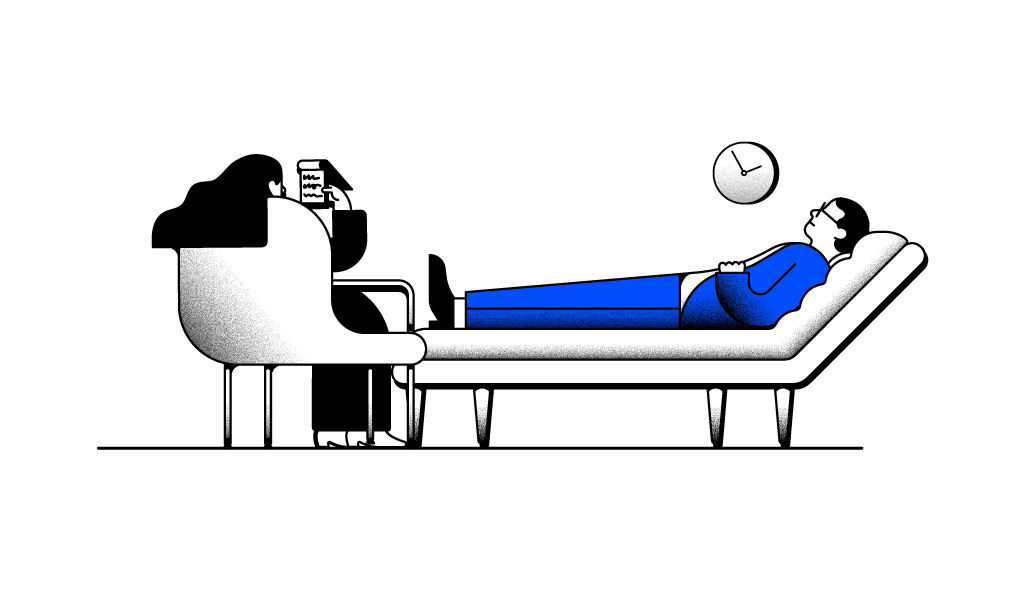With the return of in-person mental healthcare, therapists reimagine their workspaces

Much has been written about the evolving workspace, but offices dedicated to the treatment of mental health have garnered little attention as the pandemic put the brakes on in-person patient visits and as the practice of telemedicine surged.
However, as mental health practitioners have eased restrictions about office visits, they are reimagining what those environs look like and how they function. And it’s a good thing. Despite the explosive growth of the telehealth industry, a survey from Rock Health and the Stanford University School of Medicine found that more than 60% of Americans actually prefer in-person mental healthcare to virtual visits.
“I believe it’s important for physical spaces to reflect direct feedback from your [mental health] teams — what are they looking for, what works, and what doesn’t,” said Danish Qureshi, cofounder and chief growth officer of the mental healthcare giant LifeStance Health. “The design elements that support mental health and wellness will vary from team to team, and that collaborative input is important to ensure your space reflects the unique needs of your employees.”
With the return to the office, employers everywhere have introduced elements to enhance their teams’ mental health — everything from “chill-out rooms” to tech-enabled outdoor workspaces — and have also initiated programs to support employee well-being. Disability:IN, a nonprofit that works with more than 400 companies to ensure they are more inclusive of those with disabilities, noted, for example, that one of its partners, Accenture, has trained more than 10,000 mental health allies and hosts regular events to help employees combat loneliness.
In a clinical setting, Qureshi stressed that a pleasing environment is also key. In other words, the lonely, lumpy couch and shelfful of well-worn psychology books won’t cut it. LifeStance — which operates more than 500 locations in 32 states, employing some 5,000 mental health practitioners — has given a string of outposts a fresh new look in an effort to promote patient and provider comfort, lower stress and support sustainability, Qureshi pointed out. As a provider of virtual care, the company has also embraced the concept of “spatial design,” he added, optimizing the real-world background a patient sees on camera during a telehealth visit.
As for the office makeovers, he said, “Every detail, from lighting to materials to color palette, was thoughtfully selected to encourage stress reduction and ensure our patients feel connected, in control and supported. For patients, we understand that seeking mental healthcare for the first time can be anxiety provoking. By designing a space where they feel comfortable and welcome, we can help them feel more at ease during their treatment plan.”
Stephanie M. Franzoni, a therapist in Southport, Illinois, who is part of the LifeStance network, noted that since returning to in-office sessions, patients have warmed to her revamped space. “The evolution of the therapist’s office invites a new perspective on the therapeutic relationship,” she said. “The new decor is inviting to all generations, especially the emerging adults who comprise the majority of my caseload.”
Something both mental health practitioners and employers in general can do to create a more peaceful environment? Introduce greenery — even if it’s fake. “The green foliage mimics the serenity of nature and provides a peaceful atmosphere,” said Franzoni.
Working as a marriage and family therapist in the Bay Area during California’s shelter-in-place orders, Eileen Van Tyne met with her clients outdoors, something she said she will continue to do considering the benefits of a bucolic setting. (She even mentions in her email signature “outdoor therapy” as part of her range of specialties.) Van Tyne said she has also brought nature into her indoor workspace, as well as “all the things I couldn’t offer over Zoom,” like weighted blankets and art supplies.
For Nicole Rainey, a therapist in Tallahassee, Florida, whose practice specializes in creative treatments for mental health like art, music and animal therapy, environment is anything but an afterthought. Rather, the space where treatment happens is everything, especially as the world returns to a semblance of normalcy.
“The pandemic taught us a lot, and one of those lessons was how important connection is, especially in the mental health space,” she said. “We all sat behind a computer screen for too long. People want to feel connected again.”

